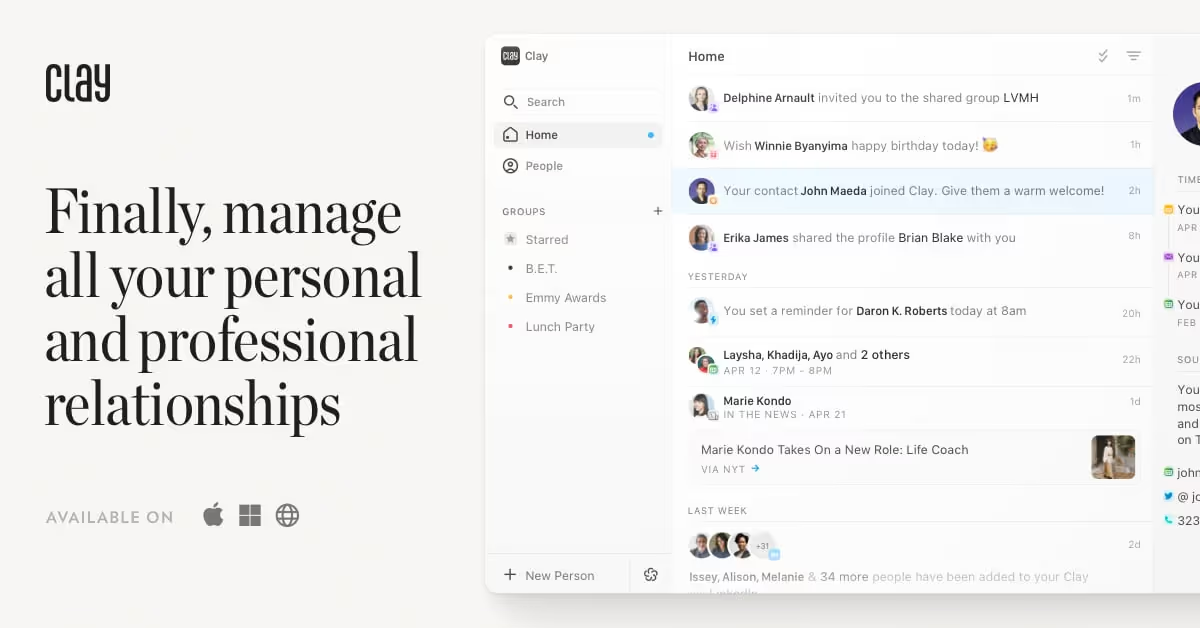
We envision a future where access to Earth observation data is as simple and intuitive as a Google search, empowering communities worldwide to tackle climate change, protect nature, and respond to humanitarian challenges with unprecedented precision and speed.
By harnessing the power of open and responsible AI, we create innovative, scalable tools and models that revolutionize how satellite and environmental data are processed and shared, breaking down barriers to information access for marginalized groups and environmental actors.
Our mission is to democratize Earth observation, enabling real-time, cost-free insights that fuel informed decision-making and inspire collective global action toward a sustainable planet.
Our Review
We'll be honest — when we first stumbled across Clay, we thought we'd accidentally clicked the wrong link. Here's a nonprofit using AI to track deforestation and plastic waste, operating under the same domain as what appears to be a relationship management platform. It's confusing, but once we dug deeper, the Earth observation side of Clay genuinely impressed us.
The Mission That Caught Our Attention
Clay's nonprofit arm isn't trying to sell you another SaaS tool. They're democratizing satellite data to tackle climate change, and their approach is refreshingly direct. Instead of building yet another enterprise dashboard, they've created open-source AI models that make environmental monitoring accessible to communities who need it most.
The numbers they're throwing around sound almost too good to be true — 100x faster and cheaper than traditional machine learning for Earth observation tasks. We've seen plenty of "revolutionary" AI claims, but Clay's focus on real-world environmental impact gives their tech claims more weight.
What Actually Works
The most compelling part isn't the AI buzzwords — it's the practical applications. Clay can detect illegal mining operations, track deforestation in real-time, and spot plastic waste from satellite imagery. What used to cost tens of thousands of dollars and take months now happens instantly and for free.
Their open-source approach also stands out in a landscape dominated by proprietary solutions. Environmental groups and researchers can actually access and modify the tools they need, rather than being locked into expensive vendor relationships.
Who This Actually Serves
Clay isn't building for Fortune 500 companies or VC-backed startups. They're targeting environmental organizations, researchers, and marginalized communities who've been priced out of satellite data access. It's a refreshingly mission-driven approach that addresses real barriers to environmental monitoring.
If you're working in climate research, conservation, or environmental advocacy, Clay's tools could genuinely change how you approach data-driven decision making. For everyone else, it's worth watching — this kind of democratized access to powerful AI tools often spreads beyond its original use case.
Open-source AI foundation models for Earth observation
Web apps for satellite data access
APIs and backend infrastructure for environmental monitoring
Rapid detection of plastic waste, deforestation, and illegal mining
Cost-effective and instant environmental data access for marginalized communities








